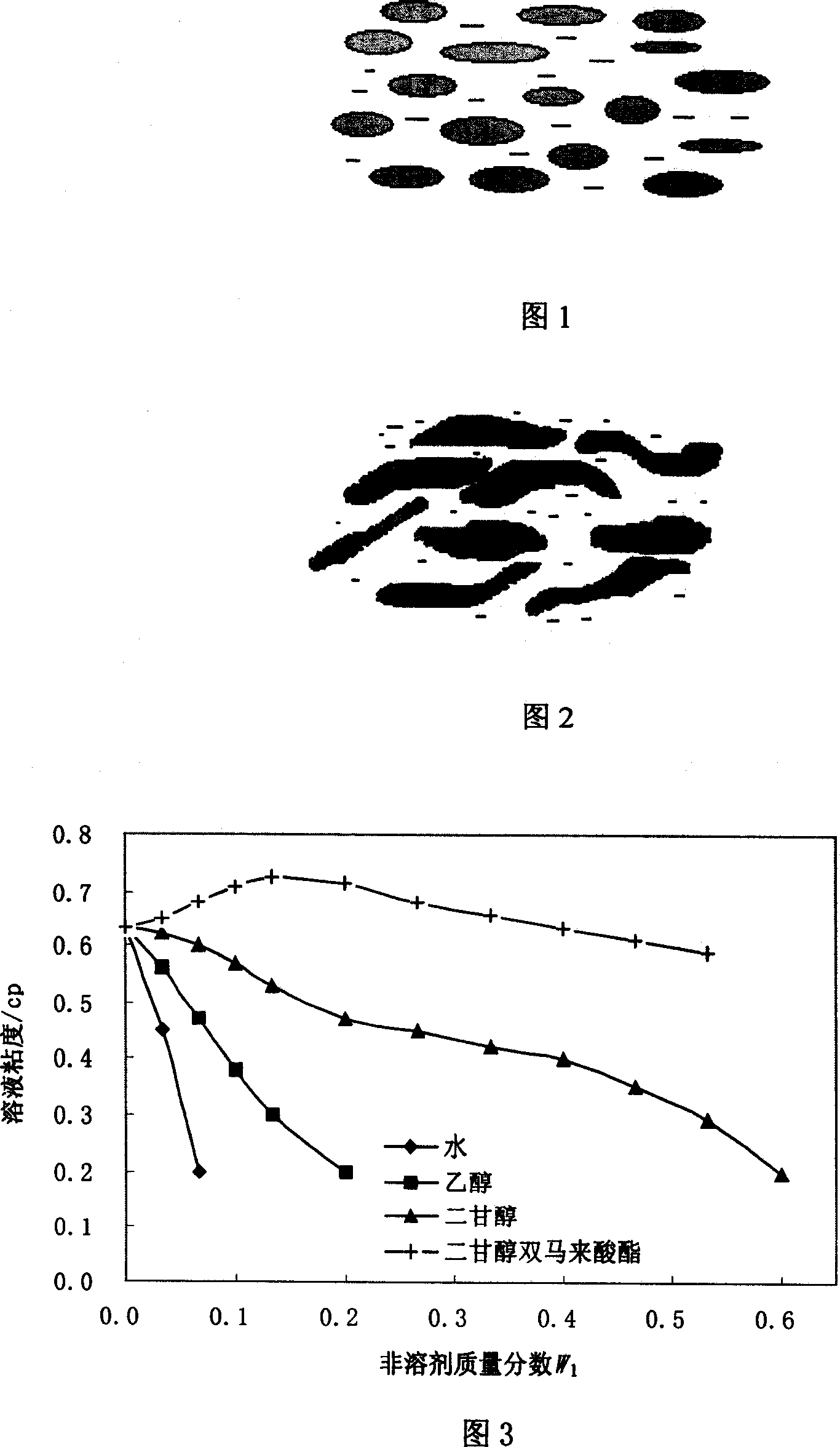Preparation method of high molecule microfilter membrane and porogenic agent
A polymer additive, microfiltration membrane technology, applied in chemical instruments and methods, membrane technology, semi-permeable membrane separation, etc. It can solve problems such as poor stability, which is conducive to large-scale commercial continuous production and short time.
- Summary
- Abstract
- Description
- Claims
- Application Information
AI Technical Summary
Problems solved by technology
Method used
Image
Examples
Embodiment 1
[0045] Polyethersulfone (produced by Nanhu Chemical Factory of Jilin University, hereinafter referred to as PES) 15%, solvent N-methylpyrrolidone (hereinafter referred to as NMP) 60%, non-solvent porogen diacid diester 20%, polymer additive Polyvinylpyrrolidone (brand name K-30, hereinafter referred to as PVP) 5% is placed in the feed liquid tank together. Dissolve and stir into a homogeneous solution, filter, and vacuum defoam. Then adjust the temperature of the film-making room at 25°C, humidity 70%, scrape the film, control the dry phase volatilization time to 60 seconds, then immerse the nascent film in a water bath, the water bath temperature is 20°C, the casting liquid is solidified to form a film, and the film is placed in the water bath. Rinse in water at 40°C for 5-10 hours to make the casting solution completely gel, the solvent and additives flow out completely, and dry at room temperature. The surface structure of the obtained microporous membrane is shown in Figur...
Embodiment 2~6
[0062] Keeping the mass ratio of the additive to the solvent constant and the content of the polymer additive constant, the casting solutions with the polymer concentrations of 8, 12, 18, 21 and 25% were prepared in sequence. Membrane was prepared in the same manner as in Example 1, and the obtained membrane performance results are listed in Table 3. Examples 2-6 illustrate that as the polymer concentration increases, the pore diameter of the membrane gradually decreases, and microporous membranes with different nominal pore sizes can be prepared by adjusting the size of the high polymer.
[0063] table 3:
[0064] polymer concentration
Embodiment 7~9
[0066] Change the type of solvent, and prepare polymer solutions with the same concentration with dimethylsulfoxide (DMSO), dimethylacetamide (DMAc), and dimethylformamide (DMF) solvents respectively. All the other operations were performed as in Example 1. The experimental data results are listed in Table 4. Examples 7-9 illustrate that different solvents can be used to prepare microporous membranes with a certain pore size.
[0067] Table 4:
[0068] Solvent type
PUM
| Property | Measurement | Unit |
|---|---|---|
| Nominal aperture | aaaaa | aaaaa |
| Effective area | aaaaa | aaaaa |
Abstract
Description
Claims
Application Information
 Login to View More
Login to View More - Generate Ideas
- Intellectual Property
- Life Sciences
- Materials
- Tech Scout
- Unparalleled Data Quality
- Higher Quality Content
- 60% Fewer Hallucinations
Browse by: Latest US Patents, China's latest patents, Technical Efficacy Thesaurus, Application Domain, Technology Topic, Popular Technical Reports.
© 2025 PatSnap. All rights reserved.Legal|Privacy policy|Modern Slavery Act Transparency Statement|Sitemap|About US| Contact US: help@patsnap.com



